Everyone wants a great looking lawn in Northern Virginia.
In fact, if you pass by a great looking lawn with a thick, lush, emerald green appearance, you can’t help but admire it. You might even be tempted to take your shoes and socks off and dig your feet into it.
We understand. We want to do that, too.
As you look at a perfect lawn, you probably try to figure out what causes it to look so healthy and consistently green and dense. In fact, many things contribute to beautiful grass. Proper mowing and watering certainly help. Regular and precise fertilization, as well as targeted weed control makes a difference.
But there’s another secret to getting a highly desirable and healthy lawn, and that’s managing thatch.
You might have just stopped dead in your tracks wondering what the heck thatch is and if you have it in your lawn.
Let’s talk about what causes lawn thatch and what to do about lawn thatch so you can get that lush, lovely lawn you want for your Northern Virginia home landscape.
Understanding Lawn Thatch
When you begin learning more about how to properly care for your lawn to maximize its health and boost its appearance, while simultaneously minimizing weeds and other problems, it’s natural you’ll come across some terms you might not fully recognize right away.

Thatch is one of those terms. Here we’ll dive into answering all of your questions about thatch so you can better understand what causes lawn thatch.
What is Thatch in a Lawn?
Thatch is a fairly normal part of a lawn. It is a layer of living and dead grass stems, leaves, and roots.
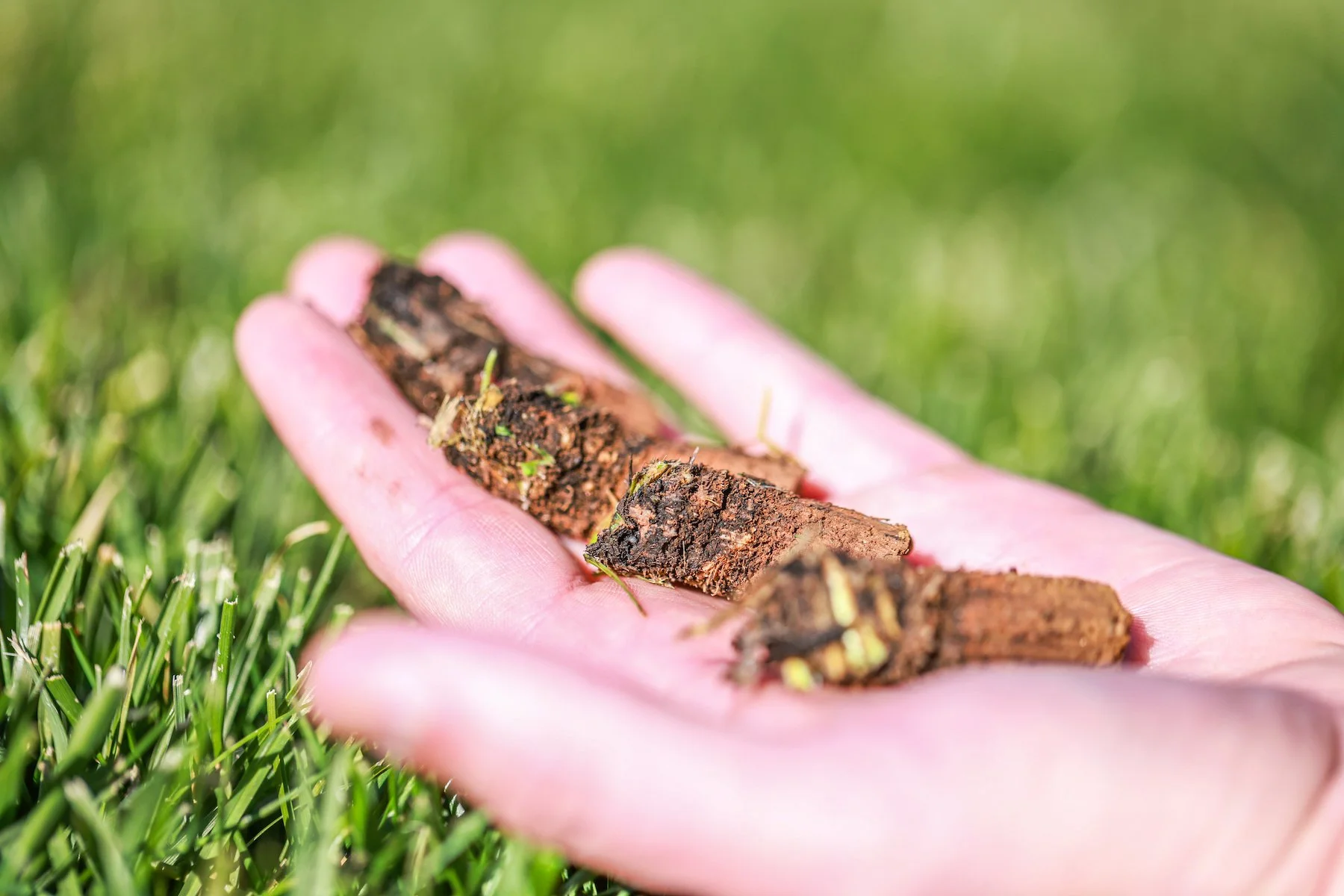
This layer accumulates between the actively growing grass you see on the surface and the soil beneath it.
What Causes Lawn Thatch to Develop?
There are a number of factors that can be put on the list of what causes lawn thatch to amplify in your grass.
Here are a list of some of the key ones:
- Poor soil drainage
- Improper lawn watering – typically too much
- Compacted soils
- Incorrect mowing habits – usually cutting off too much of the grass blade at one time, which impedes your lawn’s ability to break down thatch
When Does Thatch Become a Problem in My Lawn?
While thatch is a normal part of an actively growing lawn, it can become too thick.
When thatch exceeds the ability for microorganisms to break it down is when what to do about lawn thatch becomes something you can add to your task list.
How Do I Know How Much Thatch is Too Much?
What is thatch in a lawn is the first question you answer. Next, you want to know how thick yours is.
A thatch layer that is less than ½ an inch is usually beneficial to a healthy lawn, helping it conserve moisture, handle foot traffic and even control climate conditions.
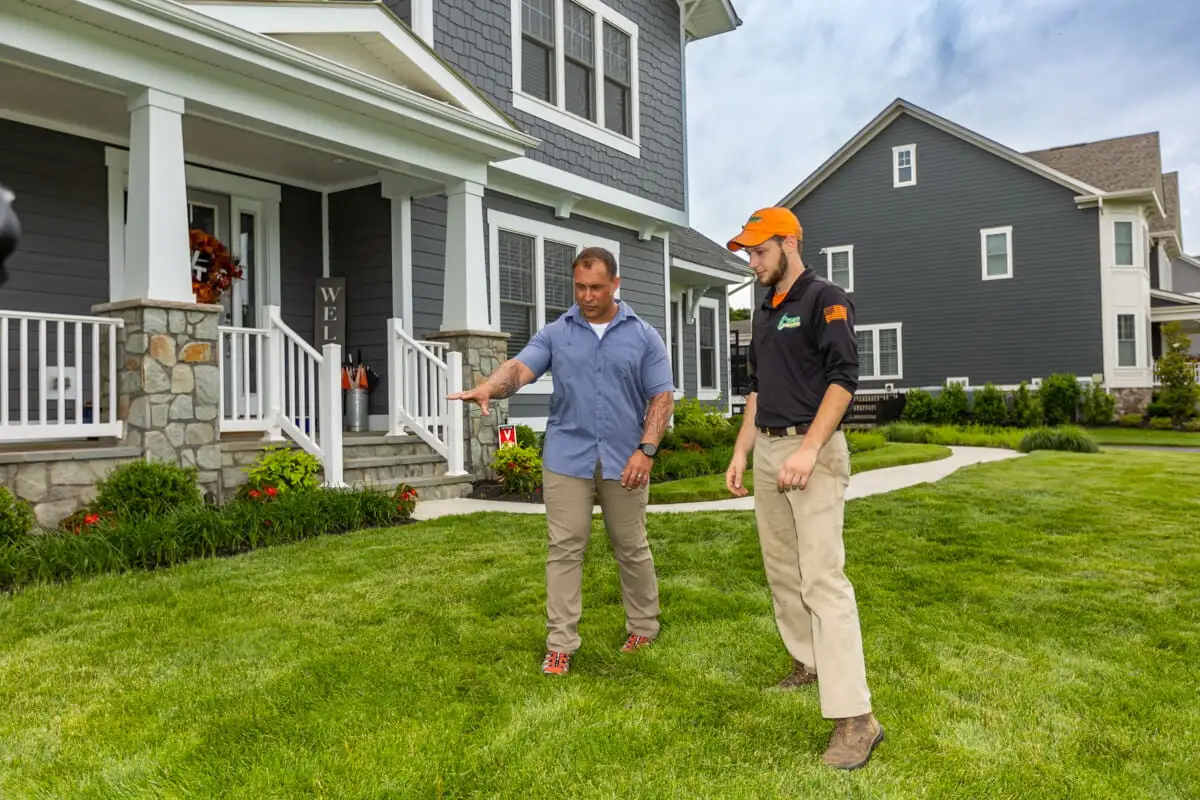
Any thatch layer that exceeds ¾ of an inch, however, is too much.
This is because thatch acts as a barrier, and at this thickness it begins to negatively impact your lawn’s ability to bring in airflow, water, and nutrients through fertilization.
A thick thatch layer can also promote unwanted diseases and insects.
How Do I Measure Thatch in My Lawn?
Now that you know what causes lawn thatch, you may want to see how thick your thatch layer is.
To check the thickness, cut a small plug that is several inches deep from your lawn. Then measure the area between the grass root and the soil; that is the thatch layer.
How Does Thatch Negatively Impact My Lawn?
There are quite a few ways thatch buildup can affect your grass and lead you to wonder what to do about lawn thatch. Let’s review the major ones:
- A thick thatch layer prevents water, nutrients, oxygen, and insect and weed control measures from reaching the soil.
- Thatch can block sunlight from the lower grass blades.
- Thick thatch holds moisture in; this combined with lack of sunlight enables lawn diseases to grow.
- Thatch can inhibit root growth, leading to shallow roots. Those roots are stuck without nutrients to grow because thatch holds them back.
- Thatch that gets too thick can lead to an uneven lawn, which can make mowing more difficult.
What Can I Do To Manage Lawn Thatch?
Lawn aeration is a service that involves taking a machine called a lawn aerator and using it to make small holes in your lawn and soil by pulling small plugs from the entire yard.
Over time, your lawn can become compacted and that compaction restricts your lawn’s ability to breathe, as well as absorb oxygen, water, and nutrients the way it needs to. As a result, your lawn becomes kind of stuck by the thatch buildup. Lawn aeration relieves this compaction, which opens your lawn up to these positive inputs and improves its root development. Roots that can reach deeper grow a healthier, thicker lawn.
The time to do lawn aeration to answer what to do about lawn thatch is in the fall in Northern Virginia. Combining this service with overseeding and topdressing helps nourish your soil and thicken your lawn in the process. The reason why is that when you create these open plugs in your lawn and soil from aerating, you also create the perfect openings for overseeding. The seed-to-soil contact is maximized.
Also, since aeration is performed in fall, it’s the ideal time to seed your lawn. The air is cooler, the ground is still warm, and that increases the odds that the new grass will thrive and survive.
And topdressing is a value-added service, and it does so much more when it's paired with aeration and overseeding. Topdressing is the addition of a thin layer of compost across your entire lawn. It falls into the holes the lawn aeration made and mixes with your clay soil, creating a better layer of topsoil to improve your soil structure and microbial activity.
How Can I Recognize a Good Lawn Aeration Service?
While you might not think to ask about aeration services specifically, you’re going to want to ask your potential lawn aeration provider how they perform the service so you can better understand how they work and so it can help you figure out what to do about lawn thatch.
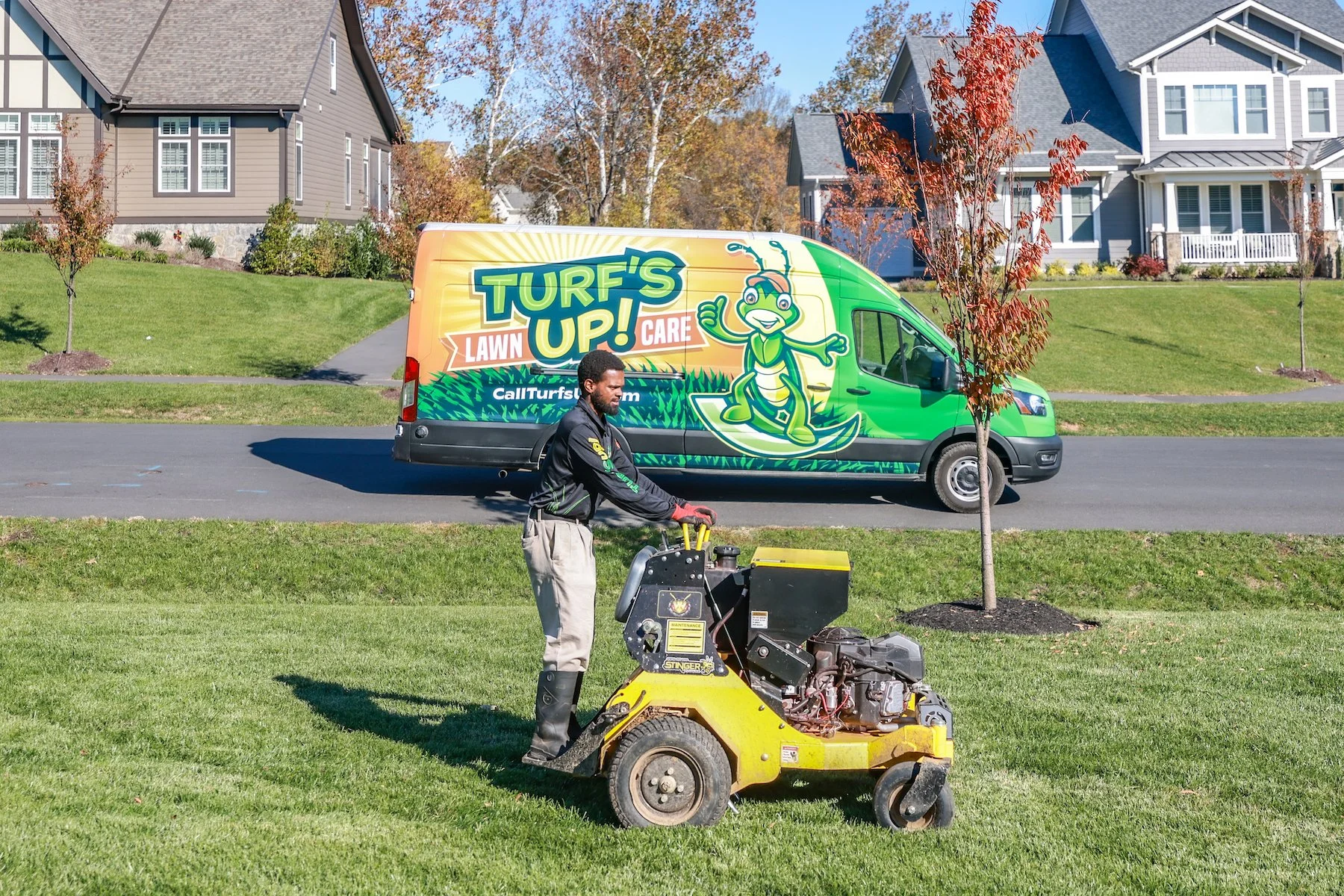
Turf’s Up’s technicians always do a double-pass aeration to give our customers the best possible results. We find that a lot of aeration service providers do not perform a double-pass aeration service.
A double-pass aeration service gives you more for your money than a single pass service, knocking down more of that overly thick thatch layer and helping your lawn roots grow in the process.
What Can I Do After Aeration to Maximize Its Benefits?
Watering the lawn right after lawn aeration, overseeding, and topdressing is a key part of the process of understanding what to do about lawn thatch.
Right after the service is performed you want to keep the turf seeds moist – not overly wet. Germination of those seeds will take roughly 10 to 21 days, and having the top 1 inch of soil being moist will help encourage this growth.
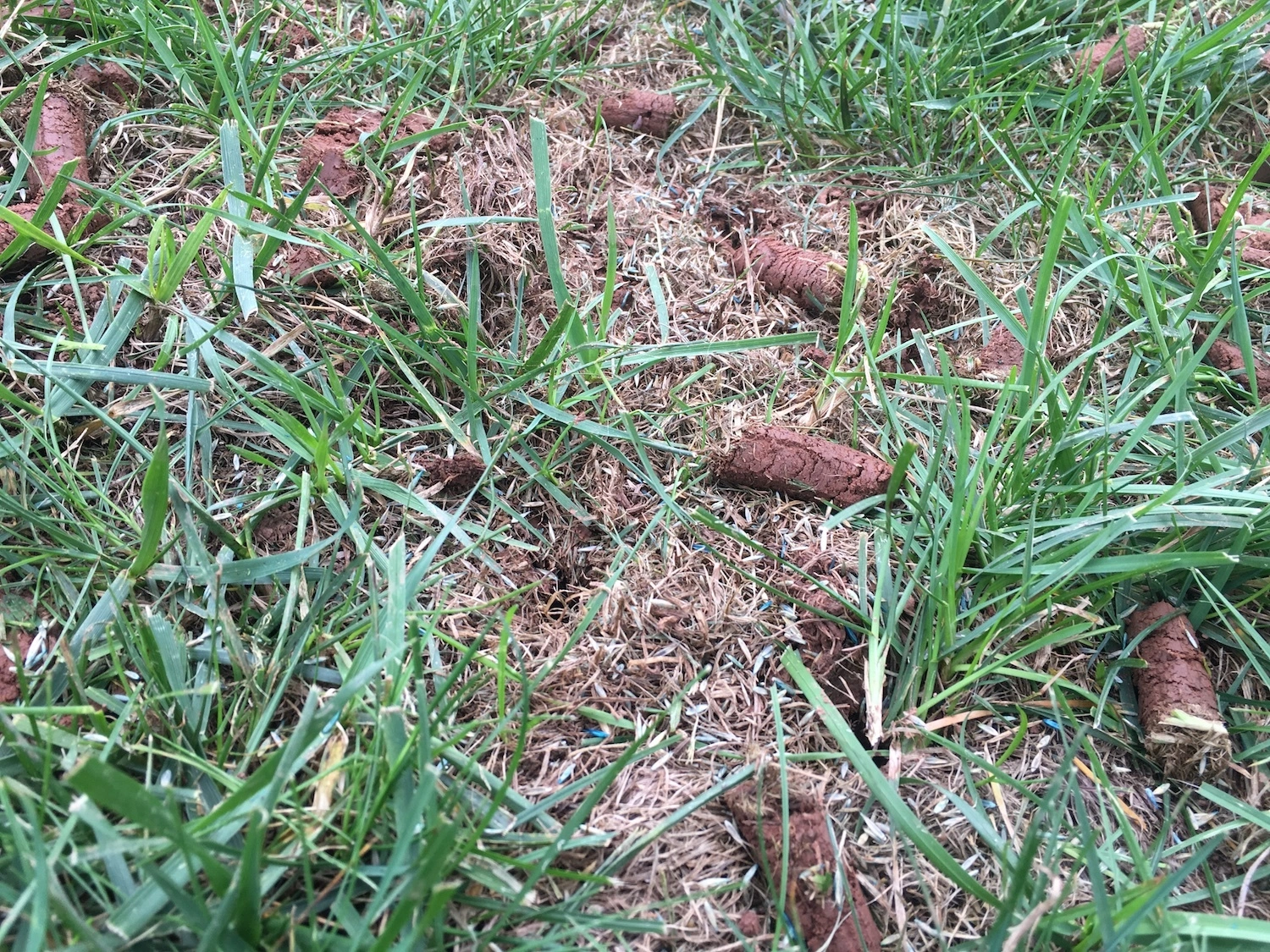
Water to a moist level and not a soaking level, which means watering in short bursts. This equates to watering 2 to 3 times per day for about 15 to 20 minutes in each location.
This is important because if you don’t keep your seeds moist you run the risk of the seeds failing to grow, wasting your overseeding investment.
How Much Does Lawn Aeration Cost?
Many people expect lawn aeration services in Northern Virginia to cost a lot, when, in fact, for everything it provides, it is pretty affordable in helping you figure out what to do about lawn thatch.
Turf’s Up’s aeration services start at $159, which includes overseeding. Adding topdressing to boost your lawn and seeding success is an additional fee.
While you might think do-it-yourself aeration and overseeding could be cheaper, it’s a tough job that requires expensive, complicated equipment, as well as plenty of knowledge of how to do the job correctly. The professional service is a lot more reliable for the cost, and you don’t have to rent equipment, learn about lawn care, or spend your weekend getting the job done.
How Often Should I Worry About What To Do About Lawn Thatch?
Timing is an important part of aeration, which is why we recommend fall as the perfect time to tackle what to do about lawn thatch.
When it comes to frequency, we suggest annual aeration because the clay soil in our region can become compacted quickly, so these services keep your lawn in tip-top shape and prevent compaction from decreasing your lawn’s health or thatch from building up too thick.
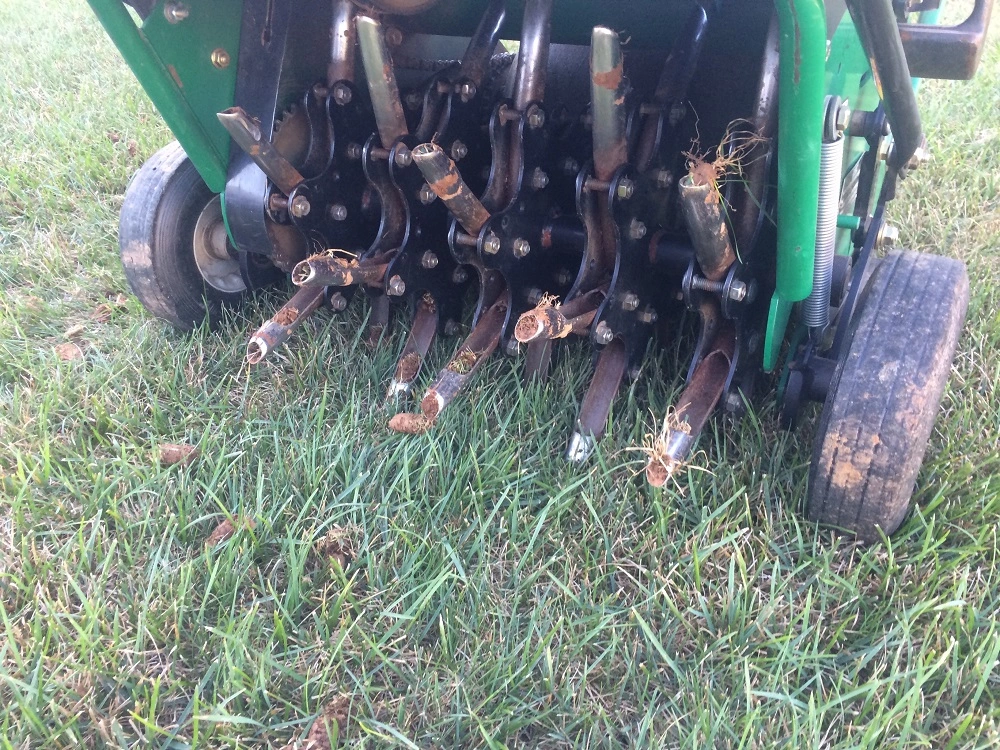
Even if your lawn looks awesome, keeping up aeration can ensure your lawn doesn’t thin out in summer. Drought and warmth can be stressful for your grass, so you can eventually see your lawn weaken without aeration.
How Can I Find the Best Lawn Aeration Company in Northern Virginia?
Start by asking the questions we’ve suggested in this blog. They will help you determine which companies will give you the best results and whether you’re going to be happy with how your lawn looks in the end. You want to make sure they know what causes lawn thatch and how to address it.
While you’re searching, you also want to check out the companies you’re considering. Go to their websites, make sure the company you choose knows about lawn care, offers lawn care programs, and has good reviews from other customers. Read Google reviews to consider current and previous customer thoughts about how the company performs. Make sure you not only notice the stars customers have given for each company you’re considering, but also the number of reviews. This shows that they continue to gather reviews and gives more credit to a higher review that is 4.5 or more because it’s harder to hold a high number with more reviews.
Choose a Lawn Care Company That Knows What to Do About Lawn Thatch
Educating yourself on lawn care is an admirable trait. We hope these questions help you figure out what causes lawn thatch and what to do about lawn thatch.
Aeration, overseeding, and topdressing are great services for your lawn in terms of helping battle lawn thatch.
If you’re going to invest in a professional lawn aeration business, and you’re still wondering which company is best for you, we’d be happy to help answer any questions you have. And if you choose Turf’s Up to take care of your lawn, we would go the extra mile for you with our double-pass aeration and overseeding and topdressing additions. We’re confident we can give you the best results possible, so you can sit back and admire and enjoy your happy, healthy lawn.
Ready to learn why Turf’s Up could be your totally awesome choice for aeration, overseeding, and topdressing services near Leesburg, Ashburn, and Aldie, VA? We’re stoked to learn more about you and help you have the best lawn on the block. Get started today with a free quote. Together, we can prepare a customized plan that is perfect for you and your lawn.
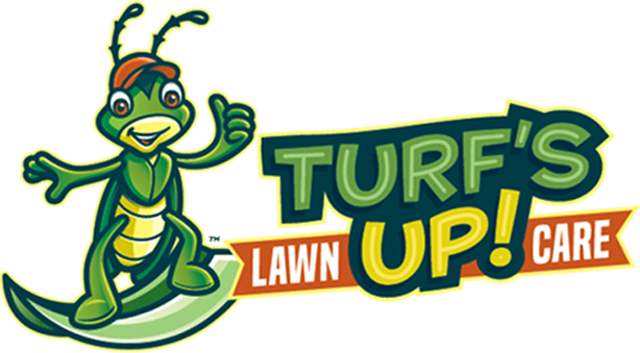
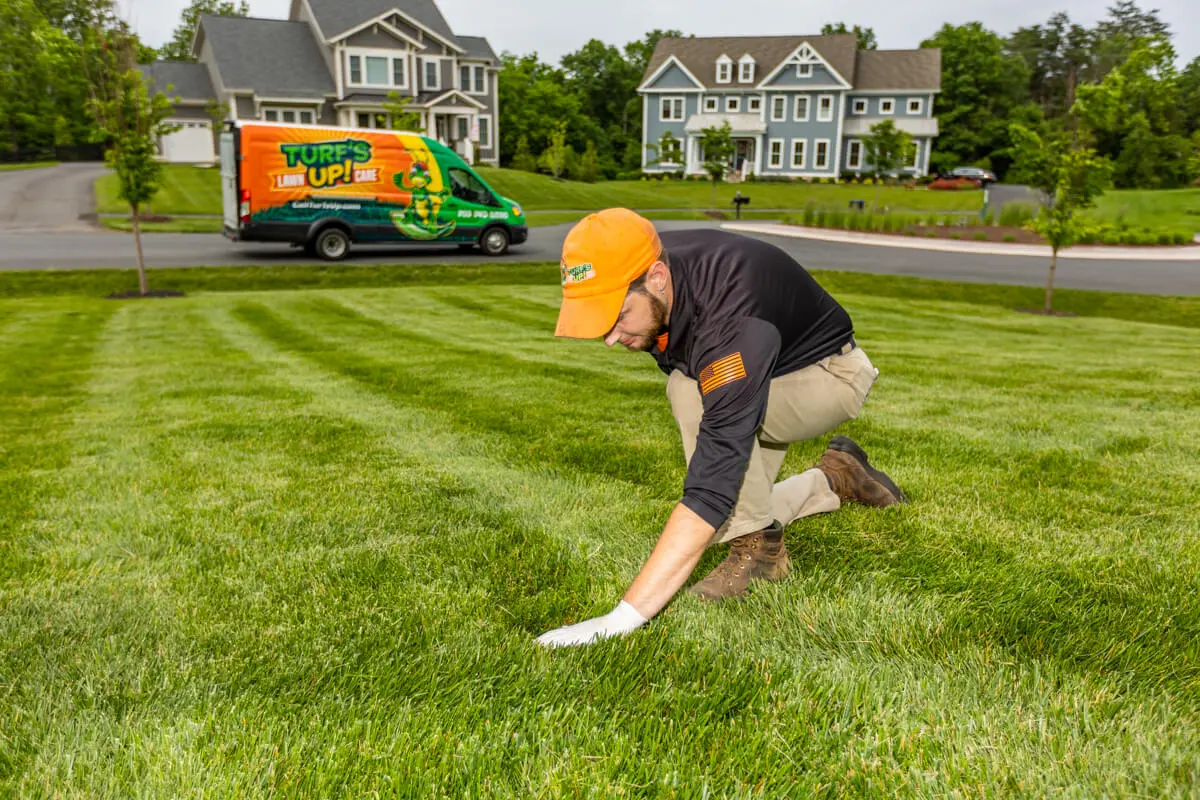

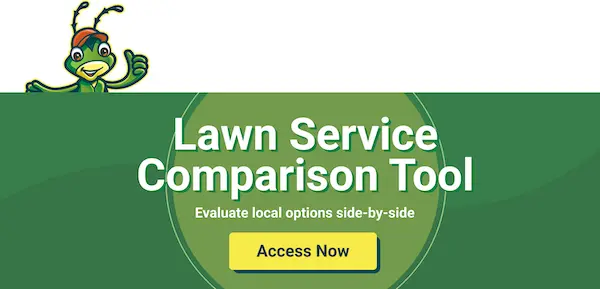


Comments (0)
Thanks for your comment!
Thanks for your feedback! Your comments have been successfully submitted! Please note, all comments require admin approval prior to display.
Error submitting comment!
There is a problem with your comment, please see below and try again.